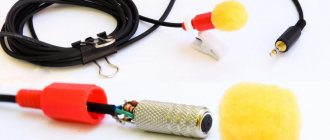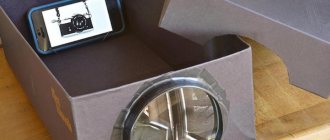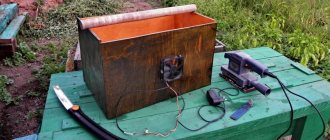Types of tripods
“Tripod” is a tripod. This is elementary physics. If they have different legs for attaching a camera or phone. This is a general characteristic.
But there are also differences. Let's figure it out!
Monopods . The prefix “Mono” indicates that this device has one “leg”. A kind of selfie stick, the main purpose of which is to increase the distance from your loved one. Equipped with folding knives. The well-known AliExpress offers many options. Sometimes for a camera or camera.
I purchased a folding monopod selfie stick for myself. The design of the knife can be very unstable and fragile. These should be handled with care. She's doing everything she can to earn her living in the DIY category.
Tripod is a tripod in different designs. Professional equipment can change the camera angle, height, and rotation.
A multipod is the same tripod, mounted in such a way that when assembled it turns into a monopod. The “legs” are folded along the main rod or removed from it altogether.
- Mini tripods , the same, multipod, only with short legs, low design, 30-40 cm high.
- Tripods - clamps, tripods-clothespins are essentially structures for attaching to a table, shelf, etc.
- Flexible tripods are mini tripods with bendable “legs”, which, ideally, should be easily attached to any post, tree, branch, etc. In fact, everything is not so simple, especially in inexpensive options - the legs are not strong enough to hold a heavy mobile phone and, especially, a camera in any position. So the ability to insert the camera in the tilt and desired rotation is limited.
Video about mini tripods and selfie stick monopod.
Watch a piece of the video lesson from my training in the video montage where I show my working tripods. This will help you avoid thoughtless purchases or, conversely, buy exactly what you need.
Options for a homemade tripod for binoculars.
Tests by “British scientists” have shown that by taping binoculars to a mop with electrical tape and resting the mop vertically on the balcony floor, you can achieve good results while holding the support with only one hand. However, although this method of “statification” has a right to exist as an alternative, it is quite impractical.
It was decided to acquire a more or less presentable tripod (as opposed to a mop). the binocular tripod itself , a level tripod , a clothes hanger, a microphone stand, and even a music stand. But in the end, enthusiasm and mercilessly overpowering semi-crazy design ideas won out. In general, it was decided to make a tripod for binoculars myself from metal tubes of different diameters from the Sovdepov baguettes (curtain rods) that I had left. Fortunately, I didn’t throw them away after the repair, but carefully dumped them in the garage for “what if they come in handy.” So they came in handy!
DIY Tripod Tools
Tools needed to create a tripod
For five-minute tripods, you won’t need any tools, except perhaps scissors, and even then not always.
But for “serious” tripods, which have three legs that change height, more serious tools will be required.
Here's the main list:
- drill;
- hacksaw;
- pliers, wire cutters;
- screwdrivers (screwdrivers).
In addition, scissors, glue and other tools and materials that the Master always has in stock.
Tools
Along with an extremely modest budget for consumables, only the simplest tools were used during the work:
- Wood saw.
- Drill.
- Drills 8 mm and 2.5 mm.
- A plate for sandpaper with Velcro.
- Sandpaper (100 grit).
- Clamps (not needed if you have another pair of hands).
- Tape measure, pencil, ruler, corner - by default.
The work can be significantly simplified and speeded up if you have a miter saw, jigsaw, drilling and grinding machine. By the way, a manual jigsaw would also be very useful.
Phone tripods in five minutes - simple and functional
How to make a tripod for your phone yourself using improvised materials - tips for those who don’t have time. These designs are more like holders for a smartphone than a tripod. Making a full-fledged tripod with your own hands takes a long time and not everyone can do it. Examples are below in the text.
From jars, disposable glasses, etc.
The easiest way to quickly make a tripod holder for your phone is to cut a disposable cup or a jar of yogurt (sour cream, etc.). The photo below clearly shows how such a device works - you need to make slits and insert the phone into them.
- If you make the slits diagonally, the phone will be slightly tilted.
- To place it on a higher point, it is enough to place it on something else - on a stack of books, on a jar, shelf, etc.
Pros : easy, inexpensive, fast.
Cons – not suitable for vertical shooting (from above), a stand is required for a higher position.
Tripod made of clothespins
Another easy way to make a DIY phone tripod in five minutes is to use clothespins. Connect them as shown in the figure and place your device in the resulting system.
The advantages are obvious - accessible, practically free, fast.
The disadvantages are the same as with jars - there is no way to remove the overthrow - the phone simply will not hold.
Mounting your phone on a can, bottle, etc.
You can secure your phone to a water bottle using rubber bands as shown in the photo below. Be sure to fill the bottle with water, otherwise the entire structure will not stand.
A tripod for a phone at home from a table lamp
If you have a table lamp with variable guides and a flexible base, then this is an excellent option for a tripod. All that remains is to attach the phone holder directly to it and your tripod is ready!
Pros - you can change the height, tilt, etc.
The downside is a more complex design that cannot be done in a couple of minutes.
How to make your own tripod for your phone for vertical shooting
A more serious option and you don’t need to work for five minutes. The created structure has been serving me for a long time, requiring neither replacement nor repair. Vertical shooting can be done even on the kitchen table, on the floor, etc.
You will need a couple of long rulers (wide wooden slats, baseboards are also suitable, even ceiling ones - the main thing is that they do not bend), a couple of short ones and an ordinary lid from a cardboard box , for example, a shoe box. The size should not be small so that the phone can be freely placed in any position above the hole.
The length of the slats varies from 50 to 100 cm.
- Make a cross-shaped hole in the lid , 3-5 cm wide. The main thing is that the phone can be turned over this hole in different directions.
- Next, fasten the ruler-boards together into a frame . The distance between them should be several centimeters less than the width of the box. The longer the rulers, the better - you will have more freedom of action. For fastening, you can even use ordinary adhesive tape, electrical tape, tape. Or more seriously, fasten it with screws.
- To film, secure the frame with something heavy on a high horizontal surface near (above) the shooting location, and simply place the phone in the box above the hole. The box moves freely - this makes it possible to find the best option for shooting.
This is a great option for filming cooking - just mount it on a shelf in a hanging cabinet above your desk.
Pros : it’s accessible; when disassembled, the structure doesn’t take up much space.
Cons – the height is not adjustable, you need to look for a stand for mounting.
Wire phone stand
Stiff wire will allow you to make a fairly convenient tripod for your phone. If desired, you can even change the angle of inclination for shooting. To some extent it resembles an “octopus”. This design can be screwed to the legs of a chair, table, tree, etc.
Selfie stick or monopod from improvised means
The wire will help solve the problem of not having a selfie stick for taking pictures of your loved one!
A mop, a ski stick, a branch, together with a wire, will ultimately solve the problem of moving the camera away from you to an acceptable distance.
Since this option does not have a remote control, set the camera on a timer and take several pictures. By the way, I do this even on a regular tripod; I don’t like remote controls.
Mounting a smartphone on a camera tripod
Phone holder made from paper clips - the photo speaks for itself. The advantage is that you can use all the functions of a tripod - tilt, rotate the camera, change the height.
Before attaching the first clothespin, be sure to turn out the camera mounting screw so that it does not stick out. Otherwise the clamp will not hold.
Install the second clamp as in the photo. And then use rubber bands to attach the phone.
Take large, reliable clamps.
Cardboard phone stand
There are factory-made cardboard tripod holders for phones. Why not use the idea itself and cut and glue with your own hands an analogue of what is shown in the photo below?
Master classes on making phone stands
Made of wood
What a simple wooden phone stand looks like is shown on the left in the figure:
The option with a cable channel on the bottom plate (bottom left) greatly reduces the likelihood of connector breakage due to cord jerking. Dimensions are given in the center and on the right; the angle of inclination of the groove for the device is 10-20 degrees from the vertical.
Factory-made wooden phone stands or from private craftsmen are not cheap, because... their production requires quite complex and expensive equipment, for example. wood milling machine. However, exactly the same wooden phone stand can be made literally “on your knee” if you have:
- A suitable block of dense, fine-grained wood: oak, beech, walnut, etc.
- Hand jigsaw and initial cutting skills.
- Chisel 10-12 mm wide; You can use a sharpened flat screwdriver.
- Round coarse (bastard) file with a diameter of 13-15 mm.
- A strong wooden stick of the same diameter.
- Sandpaper (sandpaper) numbers 80, 120 and 240, i.e. from the coarsest to “semi-velvet”.
The manufacturing procedure is as follows:
- The contours of the groove are marked on both side edges and along the top surface. The wood grains should be oriented perpendicular to the groove;
- Using a jigsaw, starting from the face, file down its long (rear) edge by 10 mm, and the short (front) edge by 7 mm.
- Using a chisel, carefully select the wood between the cuts;
- Using a file, select a groove in depth until a semicircular bottom is obtained. It is even better than the “branded” one - the phone, if it is suddenly pulled out of the socket, will definitely not be scratched or stuck;
- With sandpaper wound around a stick, the walls of the groove are brought to smoothness;
- The lower cable channel is made in the same way (optional);
- External surfaces are cleaned;
- The product is varnished with acrylic varnish, dried for 2-3 days at room temperature - that’s it, the phone can be placed in the socket.
From paper
Now let’s try to combine both approaches in one material: “any way, as long as it holds” and “beautiful, worthy of respect.” Plus - speed and ease of production. This material is paper.
A purely utilitarian phone stand made of paper with a density of 70-80 g/m2. m can be quickly made according to the diagram on the left in the figure:
Methods for making paper phone stands
The locations of the incisions are marked in red; blue – folds. The length of the workpiece is about an A4 sheet (297 mm); Width – to scale with Fig. This stand already uses the principles of origami: no glue, no additional fasteners. The stand on the right in Fig. already completely made using origami technique. Blank – A4 sheet. Since this stand is much more durable than the previous one, it makes sense to put thin solid (ornamental) cardboard on it, covered with colored paper, decorated with appliqués, decoupage, etc. Also about the origami phone stand, see the video:
From fabric
The shape is a soft pillow. This business is for women. Cut a square of textile 10 cm longer than the vertical of the smartphone. Then fold the fabric in half to create a rectangle.
Sew the bottom part using a machine or by hand, carefully place the remaining padding polyester or cotton wool there, twisting them into a roll. This will be the heel on which the smartphone will rest. Next, also lay a line behind it.
From there, about four centimeters, smooth out the bottom and front side and back of your rectangle of fabric, and stitch again.
Up to this part of the pad, stitch from bottom to top at the junction of the strips, and also from above. Only the space for stuffing the top of the pad with synthetic padding will remain open. Close it with a seam too.
But unusual. You will have to trim it further so that when sewn together you get a triangle, with an acute angle downwards. This is the leg of the pad, and the smartphone rests semi-vertically on the wide part.
The stand is mostly ready. All that remains is to stitch or attach a pocket for the charger with Velcro. Now you will be surprised how you managed to make the stand yourself so quickly.
From socks
An original product, especially relevant for children. For all its utility, it is a cute toy.
Necessary materials:
- 12 oval cardboard blanks;
- 1 pair of fluffy white socks; 1 pair of black socks;
- blush;
- cotton wool;
- glue.
Appearance of the device
Terry socks are suitable for this device. They are hypoallergenic in composition because they are made of 100% cotton. The only difference from cotton is the technology of weaving the fibers.
Step 1. Cut out 12 oval elements from cardboard paper and divide them into 3 groups with an equal number of shapes. Take 1 stack and on one of the parts trace the outline of the bottom of the smartphone, including the hole for the charging wire. Cut according to the markings made. Using this template, do the same with the remaining 3 sheets and glue the 4 parts together.
Cutting out blanks
Marking
Gluing the cardboard
You should get three options for blanks
Step 2. The second group of cardboard ovals is intended to design the part of the phone in which the wire is located.
Gluing the cardboard
Step 3. Set aside 1 piece from the remaining 2 groups. Glue the remaining ones to the workpiece.
Fixing the charging
Hole for cord
Step 4. Fix cotton wool on unused elements. Cut a white sock and glue it onto the fluffy mass.
Glue the cotton wool
Glue a white piece of fabric
Step 5. Glue half of the black sock onto the main part of the product.
Glue on a black sock
Step 6. To decorate the ears, cut out 2 ovals, cover them with cotton wool and decorate them with a black sock. For the eyes, cut out 2 semicircles and decorate with a black sock.
The finished muzzle remains to be glued to the base
Step 7. Glue all the parts together. Fix the set aside white piece at the back. If desired, you can make a tail from a sock and cotton wool. Decorate your cheeks with blush.
From packaging cardboard
Corrugated cardboard is a really waste material, but quite durable; especially if it is impregnated with a water-polymer emulsion, see above. Cardboard makes phone stands, both crude “instant” ones and very aesthetic ones.
How to make a simple phone stand from cardboard without glue is shown in the figure:
The simplest cardboard phone stand
The only tool you will need is a mounting knife or other sharp knife. This is an option for a summer house, garage, workshop, barn and any place where there is some cardboard box lying around.
A “quick-made” cardboard phone stand can be made from one piece, on the left in the figure:
Cardboard phone stands: one piece and organizer
And using regular PVA for paper, using the pattern in the center you can make a stand for your phone - an organizer, on the right in Fig. It’s the same from plywood, but it’s easier to make cardboard, and impregnated with EPE (see above), covered with colored paper and varnished with acrylic varnish, it will look no worse and will last no less than the famous “Chinese elephants”, one of which is shown in Fig. in the screensaver.
From wooden sticks
It is a classic telephone stand, similar in appearance to a subframe clamp.
Necessary materials :
- mini easel;
- pencil;
- decorations;
- wooden craft sticks;
- brush;
- glue;
- Mod Podge;
- knife;
- acrylic paints.
To process the product you will need fine-grained sanding paper.
Make a mark on a wooden stick with the length and height perpendicular to the crossbar of the easel
Cut the part according to the marks
Glue to the crossbar. Cut and fix several pieces of stick so that the width of the organizer is equal to the width of the telephone. Use sandpaper to remove all roughness
Facing stage. Draw the length of the perpendicular strip on a stick, mark the center and retreat 13 mm from it in each direction. From the obtained points, draw diagonal lines outward
Cut and glue this element to the front of the easel
Cover with paint and decorate with decorations
The stand is ready for use
From wire
A smartphone holder made of soft wire, harmless to the device, can still be made using the following technology:
- Buy a heat-shrinkable tube (HERE) at an electrical store or at an iron bazaar, the length of the entire length of the blank wire + 5-10 cm. The inside diameter HERE is 2-2.5 times the diameter of the wire. They are inexpensive HERE and come in different colors.
- Bend the wire into a stand in the desired manner. You can carefully try the phone in place.
- The ends of the wire should meet end-to-end, not overlapping. Therefore, having bent as necessary, bring the ends close to each other, clamp them with a clamp (at least with clothespins) and bite or cut both at once in the middle of the length of the overlap.
- Place it HERE on the workpiece, leaving 3-5 cm of hanging ends.
- Temporarily bend either end 10-20 cm from the other.
- Place it HERE on one of the ends (either), holding and turning it 30-40 cm above the flame of the gas stove burner. When HERE shrinks 5-10 cm of the wire, cut the shrunk end along the end of the wire.
- Fold the unseated end to the seated end.
- Pull the unseated end HERE over the seated one; bending carefully through HERE, bend the ends of the wire end to end.
- Shrink HERE over the flame sequentially along the entire length, starting from the edge of the already shrinked part - the stand is ready.
From bottles
The plastic stand made from a bottle is made in the form of a hanger, so you can conveniently hang your phone while charging by securing it to the block. To make such a device, you need to take ordinary scissors and any container for a drink, shampoo or cosmetic product.
The first thing to do is to wash the plastic bottle from any remaining soda or any other liquid. After this, you need to cut off the neck and front part to the center. A small hole is cut out in the resulting back for the charger.
To use the contraption, you need to put your phone in the inside pocket, insert the charger into the hole and secure it to the socket. In order to simplify the creation process, it is advisable to draw the boundaries of the future “bag” in advance.
This version of the stand can be perfectly decorated using paints, markers, fabrics or regular prints. If desired, you can attach an additional pocket for the cable from the charger.
If you need to create a classic stand for a table or any other surface, the bottle is cut almost to the very base. Small cuts are then made at the bottom, the thickness of which corresponds to the device. To increase stability, sticks or adhesive pads are glued under the bottle.
Origami
How do you like the idea of making a phone stand out of just paper? Previously, we told you in detail about the origami technique and its basic principles. We recommend reading our material on this topic, especially if you are a beginner.
For this craft, you only need a sheet of thick paper.
Watch the video tutorial in which the author makes a cool stand for his phone or tablet with his own hands. Repeat after him - it's quite simple. This accessory can be easily made in an office, university or school to use a mobile phone for reading or watching videos.
From paper clips
How to make a phone holder? One of the simplest homemade coasters consists of a paper clip. You can use this phone stand on your desk.
Now we will talk about creating a more advanced design. However, to create it you will again need office supplies - paper clips.
Step 1. Find the clamps You need to take 1 or 2 medium-sized clamps. You can choose any color you like.
Step 2: Bend Bend one end of the clamp so that it becomes a J-shape.
Using one clamp, one of its ends is grasped. You need to bend it into a J shape. This will keep the phone in place. You can use the gap between two tables or a desk drawer. Insert one end of the clip between the tables and then bend it to form a J shape.
There is also an option to insert the end when closing the desk drawer. You need to close the drawer until the clip forms a J-shape.
Step 3. Paste one into the other. Now you need to insert the first clamp (J-end) inside the second clamp.
The first J-end clamp must be inside the second clamp. Both clamps should be parallel to the table. One end of the first clamp should be able to hold the phone while its J-shaped end should be parallel to the table.
You can also add a USB dongle at the top of the end of the first clip. This will provide a larger area for the back of the phone. Everything worked out!
Simple tripod holders using bolts and glue
Before moving on to more complex designs, review the requirements to ensure that the rack and mount you create does not become unusable.
Requirements for a homemade camera tripod
Working height of a homemade tripod
It is good if it is adjustable over a wide range. But for a homemade tripod it is difficult to ensure that the minimum height is 20-30 cm and the maximum is 1.5 meters.
Reasonable limits are from 50-80 cm to 1.5 meters. This is enough for both shooting objects on a table, for example, and for shooting “full-length” without distorting the picture.
Stability, reliability
– the tripod must support the weight of the camera and not fall at the slightest vibration of the floor or wind.
Carving is important to know!
For homemade tripods, this characteristic is important, since you will have to select bolts for mounting.
So, there are two main standards for fastening threads. These are 1/4" and 1/8". Check the threads of your devices and use bolts of the appropriate sizes.
Tripod made from a plastic bottle
The difficulty is not high:
- drill a hole in the lid;
- insert the bolt and strengthen it with glue;
- fill the bottle with water for stability;
- close the cover and place a gasket on the bolt;
- attach a camera or phone mount.
Do-it-yourself stable tripod tripod made from razor blade
The idea is not mine, I saw it on the Internet!
Three plastic razors will serve you as tripod legs.
By attaching them with glue or screws to the triangular base, you get an almost finished tripod.
Before attaching the razors to the base, you need to drill a hole in it, insert a bolt of the appropriate diameter for attaching a camera or phone holder - and the tripod is ready for use.
A problem may arise with the base - you will either have to cut it out of wood or look for a triangular object of acceptable size.
For reliability, it is better to strengthen the bolt with glue (moment, epoxy) and use a rubber gasket so that the camera is attached more tightly and does not rotate during shooting.
The spool is small, but expensive, isn’t it? Why not replace Chinese “octopuses” on the table?
Stable razor stand
This option is perfect for beginner photographers who are not yet ready to spend large sums on purchasing professional camera accessories.
The stand raises the camera 10-15 centimeters above the surface. Suitable for placement on a table, floor or other flat surface.
Rice. 16 – example of a finished stand
To create a short tripod you will need:
- Three shaving machines;
- Small board;
- Super glue;
- One screw, the length of which is 5 cm and the diameter is 0.5 cm;
- Screw;
- Seal;
- Varnish of any color;
- Drill.
Cut out a small triangle on the board, which will be the base. Make a round hole in its center. Screw the screw into the resulting hole.
Attach three machines to the sides of the triangle and paint the structure with colored varnish.
Place a sealing ring on the screw and screw in the nut. Secure the camera.
Fig. 17 – example of using the stand
Sophisticated DIY Tripods: Cheap Tripods for Home Photography
A tripod made from ski poles or how to make a tall tripod for your phone or camera
You will need, in addition to the sticks, a tube larger in diameter than the sticks, two round or square bases: one for attaching the legs and the main tube, the second (smaller) for attaching the camera.
The tripod assembly diagram is as follows:
Ski sticks are used as tripod legs. They are cut to a length of approximately 70-90 cm. Using bolts, they are attached to the base, which has a hole for the main pipe (it can be fixed, but then it will be impossible to change the height of the tripod).
For fastening, you can use metal corners, which are sold in building materials stores, or you can cut similar ones from aluminum cans. Or cut the top of the stick so that “petals” are formed for fastening with bolts. The choice of fasteners depends on the budget and skills of the Master.
If the legs are screwed “tightly”, then they should be screwed at equal angles. For those who have “golden” heads, an option with a hinged mount is acceptable so that the legs can fold freely.
On the base, which is connected to the main tube at the top, there is a bolt for attaching the camera.
That, in fact, is the whole essence of the design.
You can use any other poles instead of ski poles. The main thing is that they are rigid enough not to bend or break. And also lightweight so that the tripod does not become a barbell for athletes.
Video instructions on how to make a tripod with your own hands from PVC pipes
I won’t describe it in detail, it’s better to watch the video. I found something more understandable for you, although without words.
From the bottle
You will need a PET bottle and a utility knife (scissors). The top of the bottle must be cut off evenly. The remaining lower part of the bottle should not be too high - the stability of the structure will be ensured by half the height of the bottle.
On opposite sides of the cut edges, using scissors, 2 notches are cut out, in which the width is equal to the thickness of the phone, and the depth is approximately half the width of the phone.
The phone is inserted into the resulting grooves with its narrow part. That's it, you can start shooting.
Pros: anyone can make this tripod
Cons: the phone is fixed in only one position, it is impossible to change it
Tips and tricks
How to make a tripod for your phone yourself is an endless topic, there are many solutions, use your ingenuity, golden pens and you will succeed. Pay more attention to the shooting itself.
- Be sure to check that the mount is secure to avoid falls and damage to the phone.
- Get phone holders - simple and convenient. It's not expensive and makes the job easier.
- Shoot a lot, from different angles, so that during editing there is no capture in the video and photographic material.
Useful materials:
About choosing a phone, camera and video camera for filming.
How to film a master class at home.
From clothespins
To do this you will need a ballpoint pen and 6 clothespins.
- Two clothespins are put on the center of the handle parallel to each other, in the same direction.
- Then, on both sides of them, close to the first pair, 2 more pieces of clothespins are attached at an angle of 90 degrees relative to the first.
- The ends of the two outer clothespins are grooves where the phone will be installed.
- The last step is to install the last two clothespins parallel to the first two, but in the opposite direction.
Thus, the stability of the structure is ensured by the 1st and 3rd pair of clothespins, the 2nd pair serves as a stand for the phone.
Pros: ease of assembly and availability of materials
Cons: inability to set the desired angle of inclination
How to make a tripod for a spotlight
To create the design you will need:
- Bar (30 mm width and 20 mm height).
- Stick 4.8 meters long (strong).
- 5 screws.
- Construction washers – 12 pieces.
- Bolts – 2 pieces.
- Wing nuts – 7 pcs.
You need to separate 6 parts from the stick. You need to make 3 legs 68.2 cm long; 1 part 110 cm long; 1 part is 99.8 cm long. Now you need to cut out a triangle from the block in which the main stick will be placed. In this triangle you also need to make a square to the size of the base of the stick, which is then placed in this part. Now you need to screw the legs to the resulting triangle on each side using wing nuts. Pre-cut the ends of the legs diagonally. Next, you need to screw another 110 cm long perpendicularly to the main vertical stick so that the attachment point is 20 cm further from the middle of the stick. All that remains is to secure the spotlight handle to the horizontal rod using the same wing nut. At this point, the homemade tripod for the spotlight is ready.
This article introduced the basic tripods and described the step-by-step process of making them. As you can see, you can build a stand for almost any device: telephone, video or photo camera, microscope, spotlight. You can also come up with a homemade tripod for a level and other devices that require a mandatory stationary position when used.
- There is no need to place the tripod on uneven surfaces. Even if you managed to place the installation on an uneven surface, it could fall at any time. The device will become unusable as a result of impact.
- You should not install too bulky devices on a tripod, especially a homemade one, as they can damage the stand.
- The horizontalness of the surface can be checked with a level. This will allow you to control the tilt and eliminate uneven frames when shooting video or taking photographs.
- You should always take a stand with you to a video shoot, even if it seems like you won’t need it at all. Perhaps a situation will arise when new ideas come to mind, and it turns out that a tripod is necessary in this case.
- Do not use a weak stand in extreme places (for example, on rocks). If the structure falls, you can damage not only the tripod, but also expensive equipment.
How to make a camera tripod: the first method
Tripods are even more in demand for video cameras than for smartphones. When shooting, you need a clear and static picture to make successful and unforgettable shots. Of course, you can purchase a stand in a store, but the prices for such designs are not exactly low.
For a homemade camera tripod you will need:
- 3 razors.
- A small piece of board.
- Durable glue.
- Screw.
- Sealing ring.
- Drill.
The first step is to cut a triangle with equal sides (5-7 cm) from the board. In the middle of the figure you should make a hole with a drill into which you will need to insert a screw. Now on each side of the wooden triangle you need to glue the razors with glue so that they act as tripod legs. You need to screw an O-ring onto the screw so that the camera does not push the screw down. All that remains is to secure the camera to the screw by screwing the screw into the corresponding hole on the device.
This stand looks very beautiful and will also serve as an excellent attribute even for amateur video or photo shooting.











